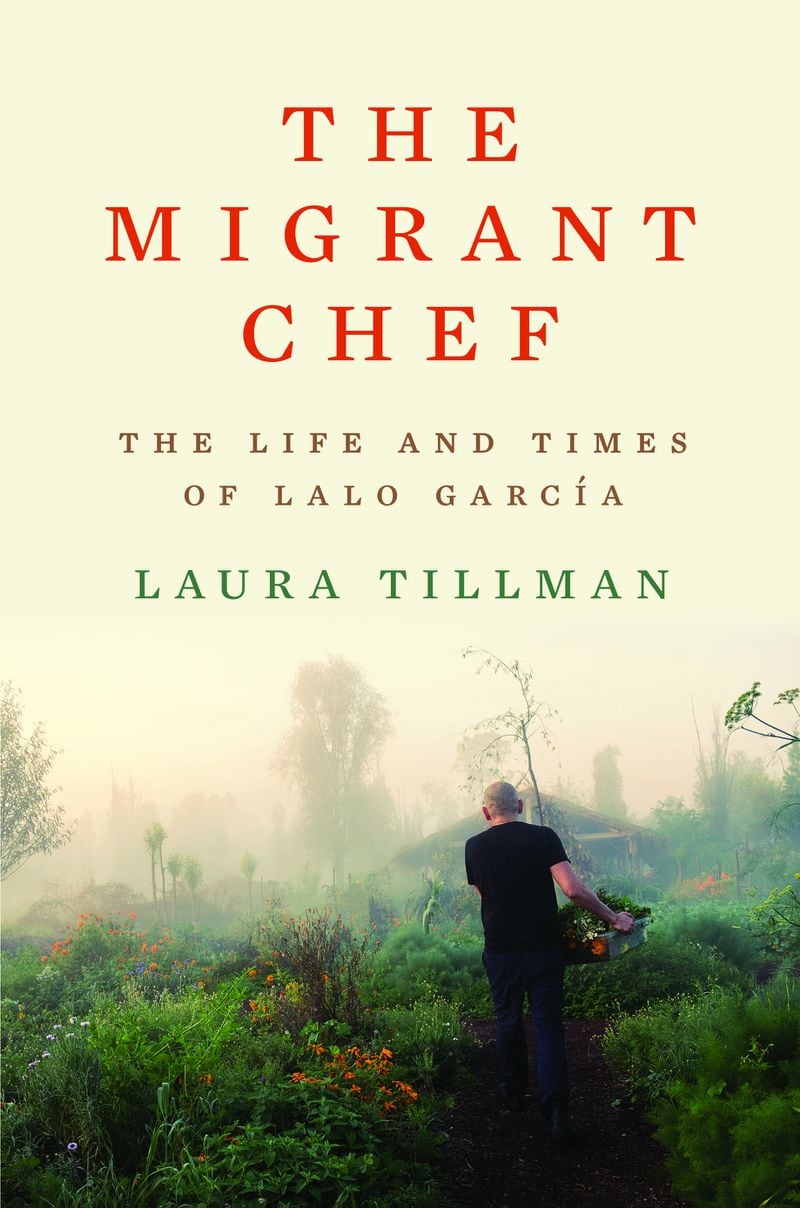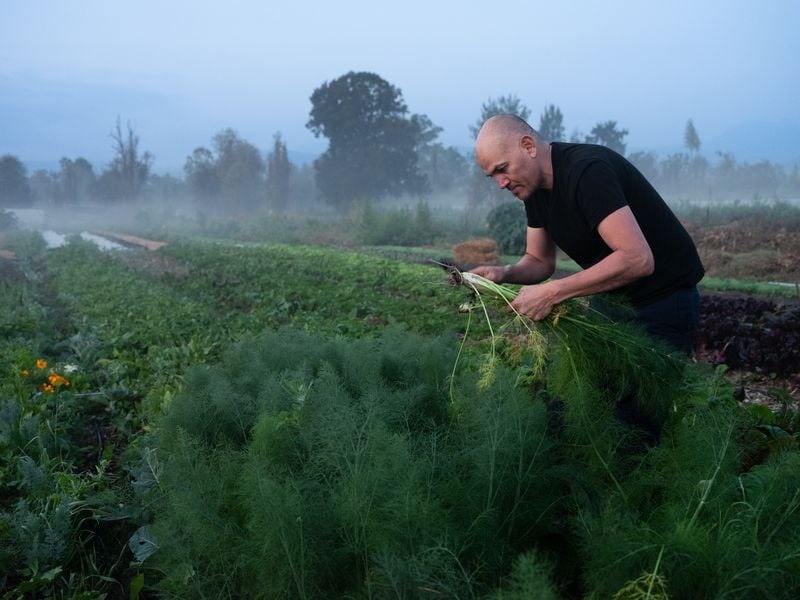In the mid-2000s, when I was working as a restaurant critic for The Atlanta Journal-Constitution, I received a press release from Van Gogh’s, then the flagship of North Fulton’s Sedgwick Restaurant Group. Owners Chris and Michele Sedgwick were excited to announce the appointment of Eduardo García as chef, a young man who had earned the sobriquet “Fast Eddie” when he was a cook at Lenox Square’s late, lamented Brasserie Le Coze.
I gave the pitch a tacit pass and put the press kit in a pile that was threatening to topple over on my desk: Van Gogh’s had felt stodgy and tired on my previous visits; it felt out of step with the times.
The Sedgwicks apparently came to the same conclusion as they soon recast the space as Bistro VG, with a sleekly urbanized decor, lower prices and a revamped menu that better showcased García’s talents. That did bring me out for a visit, though by the time I got there the much-touted chef was gone. I was informed it was an “immigration issue.” In truth, he had been deported and forbidden from ever reentering the United States.
Years later, when I heard about a chef named Eduardo “Lalo” García, whose groundbreaking restaurant Maximo Bistrot was considered among the finest in Mexico City, I had no idea it was the same man.
Then, in 2019, an American journalist based in Mexico named Laura Tillman tracked me down to interview me for a book she was writing about García and began to tell me his fascinating story — one that took him from the onion fields of Vidalia, to the Atlanta restaurant world, to the Georgia state prison in Hardwick and finally home to Mexico, where he became one of the great interpreters of its cuisine.
That book — “The Migrant Chef: The Life and Times of Lalo García” (W.W. Norton & Company, $30) — has recently published, and it’s a fascinating and propulsive read. Tillman met García in 2016, when the American presidential election was bringing the impact of border crossings to the public discourse, and she saw both the universality and hope in his story, which he was eager to tell.
Credit: W.W. Norton & Co.
Credit: W.W. Norton & Co.
“There are so many Mexican cooks who migrate to the U.S., who make these border crossings,” she said, “and I began to think about the meaning of Mexican cooks in kitchens, and how a self-taught man could become one of the greatest chefs in the world.”
García was born in rural Guanajuato in the central part of the country and moved with his family to the exploding metropolis of Mexico City, as did many other Mexicans in the 1970s. While his mother tended the house, his father traveled freely over the U.S. border (no passport was required) to work as an itinerant farm hand. He followed the growing season from the citrus groves of Florida to the fruit orchards of Michigan and sent money home. Eventually he sent for the family to join him. From the age of 10, García proved himself a fast worker, gathering bales of pine straw that his dad could sell.
The family eventually settled in Chamblee, and his dad traded the fresh air and backbreaking labor of farm work for the drudgery and security of a restaurant job, washing dishes at a branch of El Torero. Young Lalo, still a teenager, followed suit as a dishwasher before distinguishing himself as a miraculously fast prep cook at Georgia Grille, a South Buckhead restaurant famous in its day for a signature lobster enchilada. A coworker there dubbed him “Escoffier reincarnate” after the legendary French chef. Here was a teenage autodidact whose skill, speed and precision easily bested culinary school grads.
“It’s kind of wild when you think about him in the early 1990s,” says Tillman. “There were no YouTube videos for him to learn from, but he just had this great instinctual ability to know what a dish needed. He also has these very powerful and dexterous hands.”
García got a second job at Brasserie Le Coze, where he could observe star chef Eric Ripert, who flew in from his New York restaurant Le Bernardin to oversee the kitchen. Fabrice Vergez, the general manager and eventual owner of the restaurant, recalled him as “the fastest ever. Sometimes we’d do 500 or 600 lunches, and he could do the job of two guys.”
Outside the kitchen, though, trouble found García. With friends and cousins, he got involved in some petty thefts and, eventually, an armed robbery that left a storeowner bloodied. Though he wasn’t directly involved in the robbery, he drove the car, which was registered to his name and quickly identified. After he was arrested, Vergez wrote letters to authorities to vouch for him. García ended up taking a three-year sentence as a plea deal — a sentence that terminated with his deportation.
Back in Mexico, he spent a few months with his grandparents but soon returned to Atlanta, where former employers were eager to rehire him. His star rose, but his immigration status was a ticking time bomb. When immigration authorities caught up with him at Bistro VG, they forbade him from ever reentering the country.
Credit: Mallika Vora
Credit: Mallika Vora
Tillman’s narrative follows García from his work in resorts to his meeting with Enrique Olvera, whose restaurant Pujol built fine dining around an exploration of indigenous foodways in a way that transformed the restaurant scene in Mexico City. Ever ready with the context, Tillman weaves in societal, historical and political background to show how migration is always the key factor in the development of food culture.
The book is also about the mystery of genius. Tillman cooks with García’s mother to get a sense of how he developed his sense of seasoning, but that doesn’t explain how he can manipulate knives and control heat. When asked to describe his cooking, she says, “There’s a lot of umami in his food, and a lot of balance.” She pauses before adding, “And a lot of butter.”
I was able to try García’s cooking and finally meet him when my family and I dined at one of his restaurants (he owns several and consults on many more) in Mexico City. Roasted suckling pig in a tortilla could not have been simpler or more sublime.
With immigration still such a fraught issue and with so many people facing deportation after spending years in the United States, Tillman sees García’s story as a hopeful example. Whatever experience he got in Atlanta was enough for him to launch. “Now, thanks to Lalo,” she says, “there’s this new generation of chefs who can get that same quality of training without ever leaving Mexico.”








